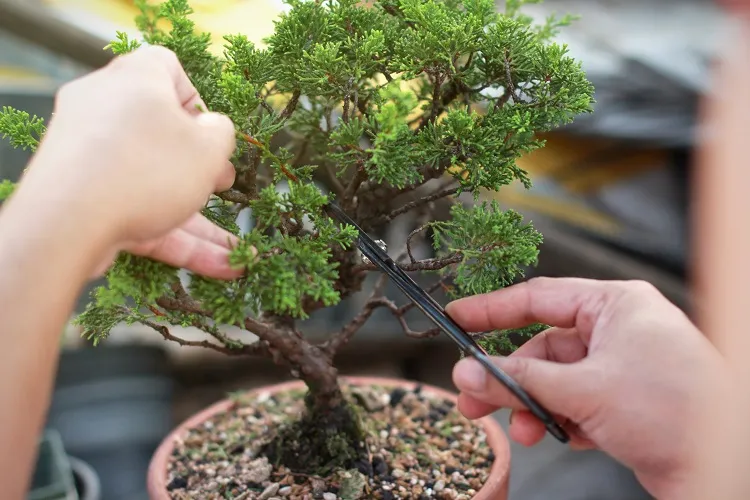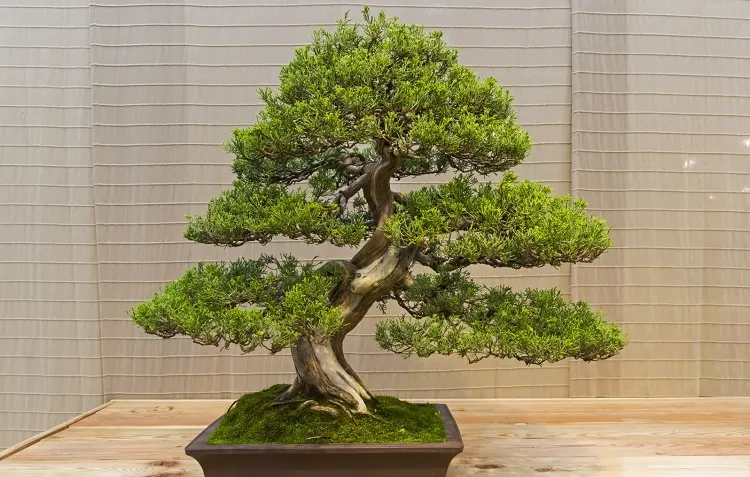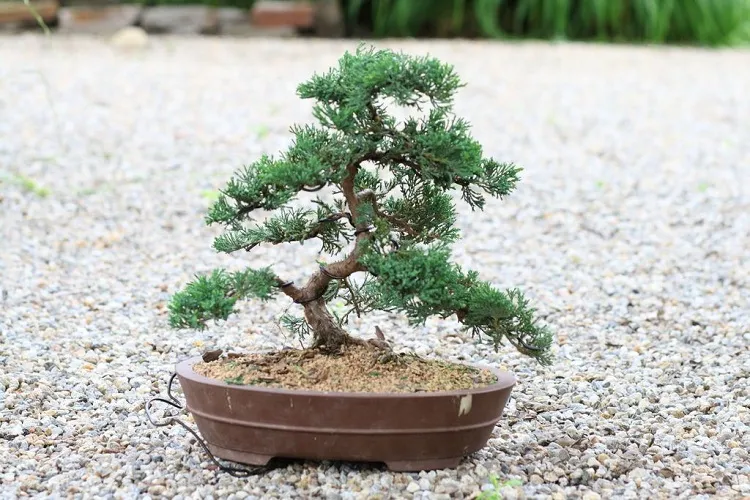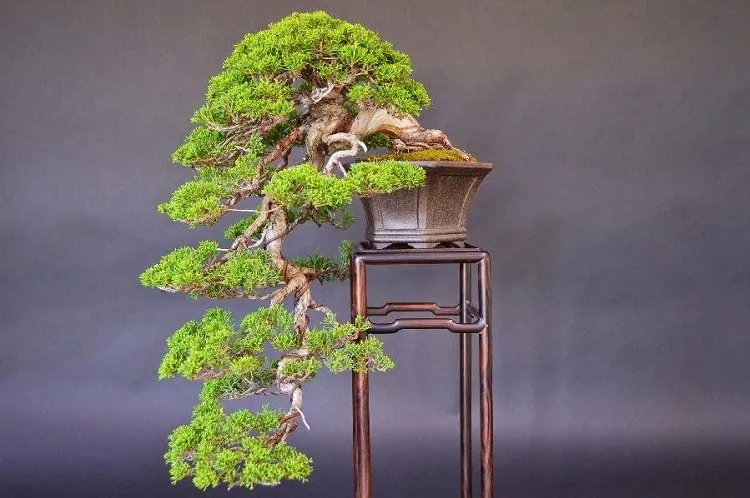Juniper bonsai trees are renowned for their timeless beauty and captivating presence. These miniature versions of full-sized trees bring a sense of tranquility and natural elegance to the space where they grow, should it be a garden or your room. While caring for this captivating plant may seem somewhat difficult at first, with the right knowledge and techniques, you can cultivate a thriving and visually stunning living art piece with ease. In this guide, we will show you the various aspects of juniper bonsai care, concerning mostly indoor cultivation.
Can a Japanese Juniper Bonsai Grow Indoors?
While juniper bonsai trees are typically outdoor plants, with proper care, they can be grown in your home. However, it’s important to note that this type of cultivation presents certain challenges due to the differences in lighting, humidity, and temperature inside your house or apartment. Here are some key rules for successfully growing the plant indoors:
- Placement: Choose a well-lit area near a window where your bonsai can receive ample sunlight. South-facing windows generally provide the best conditions, but avoid placing the tree in direct sunlight for extended periods.
- Watering: Bonsai trees, which are grown at home, tend to dry out faster due to the specific indoor environment. Water the tree when the top layer of soil feels slightly dry, but avoid overwatering, as excessive moisture can lead to root rot. It’s important to maintain a balanced watering routine, adjusting it according to the indoor conditions and the tree’s specific needs.
- Temperature: Japanese juniper bonsai trees thrive in cool to moderate temperatures. Ideally, the tree should be kept in an environment with temperatures ranging between 60 °F and 75 °F (15 °C and 24 °C). Avoid exposing it to drafts or overly warm indoor spaces.
Pruning Juniper Bonsai
Pruning is a crucial aspect of maintaining the shape of the tree. Doing it on a regular basis helps it to develop a well-defined structure and encourages new growth. It is recommended to prune during late spring or early summer, when the tree is in its active growth phase. The important thing is to remove any dead, damaged, or overgrown branches, while maintaining the overall aesthetic appeal of the tree. Pruning can be done using sharp and clean bonsai shears to ensure precise cuts without causing unnecessary stress to the plant.
Read also: How to Grow a Rose Tree? The 4 Essential Steps You Must Follow
How Much Sun Does a Japanese Juniper Bonsai Need?
Japanese juniper bonsai trees require a significant amount of sunlight to thrive and maintain their health. While growing indoors, it’s vital to find a balance between providing enough of it and avoiding excessive exposure. Here are some guidelines to ensure your bonsai receives the right amount of light:
- Natural Light: Place your tree near a south-facing window or another spot, which receives bright and indirect light. The plant should have at least 4–6 hours of sunlight each day. However, be cautious with the intense afternoon sunlight, as it can scorch the foliage.
- Artificial Light: If natural light is limited, you can supplement it with artificial one, specifically designed for plants. LED grow lights are a popular choice, as they provide the necessary amount for the plant’s development without emitting excessive heat. Position them at an appropriate distance to compensate the intensity of natural sun rays.
Some More Special Juniper Bonsai Care Requirements
While indoor cultivation can provide a suitable environment for the tree, it’s essential to expose the bonsai periodically to outdoor conditions, and in this way promote its overall well-being. This can be achieved by placing your juniper bonsai outside during favorable weather conditions, such as mild temperatures and adequate sunlight. This practice allows the tree to benefit from natural air circulation, increased sunlight exposure, and seasonal climate changes that contribute to its long-term health.
How Long Can a Juniper Bonsai Live Indoors?
In most cases, this tree lives at home for several years. However, it’s important to note that this is an ultimately outdoor plant and thrives best in its natural environment. So, placing it outside on some terrace or in the garden from time to time will improve its health and increase the lifespan. It’s worth mentioning that juniper bonsai has been known to live for several decades when cared for properly. By following the appropriate techniques, including regular pruning, providing ample sunlight, and maintaining a balanced watering routine, you can help extend the length of life of your juniper bonsai.
Cultivating and caring for this amazing tree can be a fulfilling experience. By understanding the key aspects of these plants’ needs, such as the proper pruning techniques, and the specific requirements of indoor growing, like finding the suitable sunlight and the water regime, you can have this perfect environment that allows your bonsai to grow healthy. With patience, dedication, and a little green thumb, you’ll be able to enjoy the beauty and serenity of this exquisite living art form for many years.






